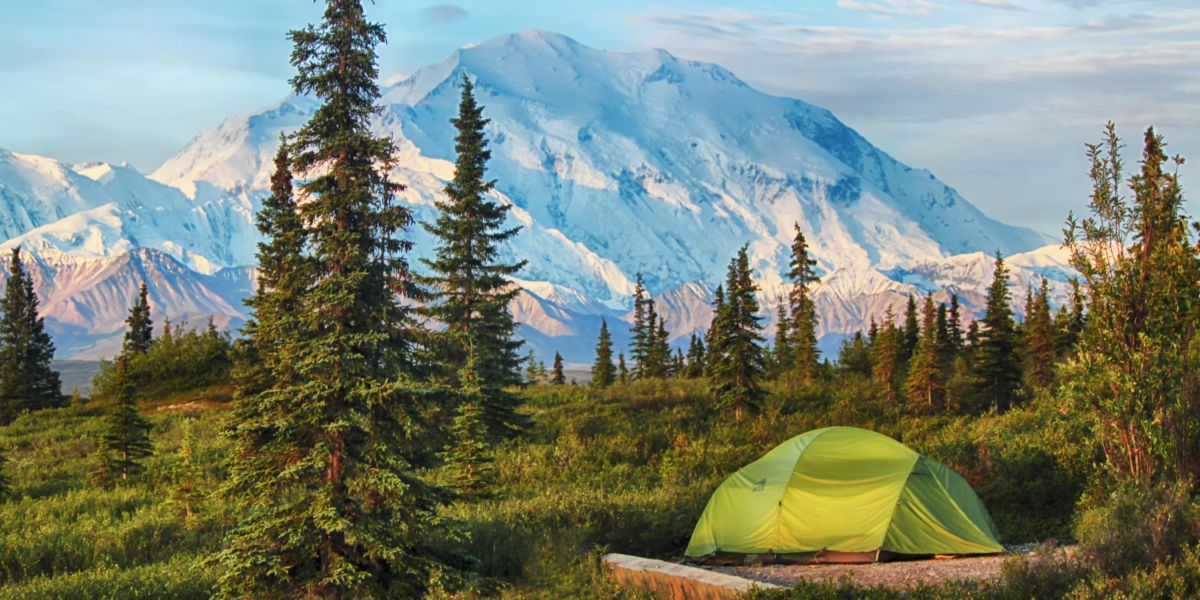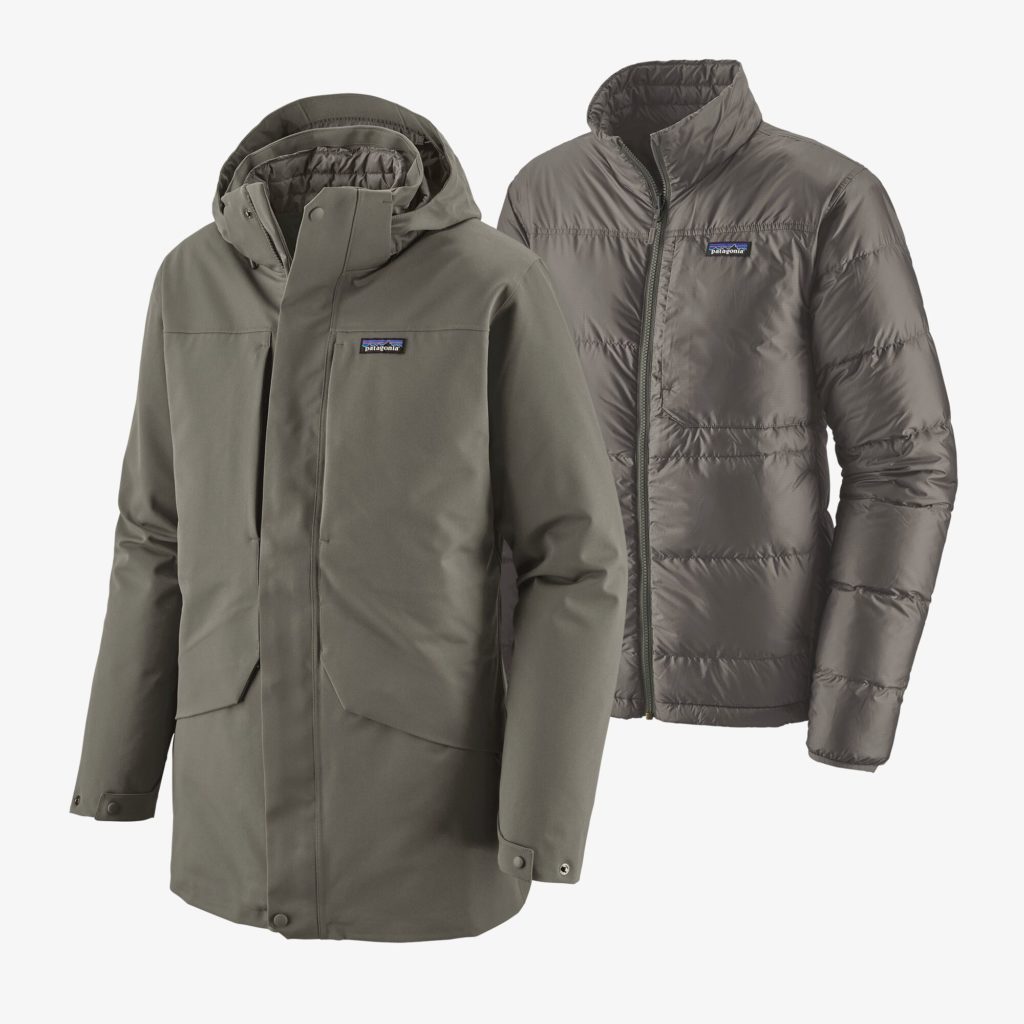
Set up Camp at a National Park with Our All-Seasons Packing Guide
You need gear that can handle the extremes of any season.

If you’re like the millions of others discovering a newfound affinity for our nation’s outdoor spaces, chances are you might have a national park visit penciled in. And if that’s the case, there’s a good chance you’ll be hoping to set up camp.
A total of 63 national parks dot the United States. A number of those attractive destinations have gone as far as implementing entry reservation systems to compensate for historic overcrowding and the complications that result. Look no further for outlandish examples of human behavior than Yellowstone, where one person tried to cook chicken in Yellowstone’s hydrothermal springs and others continue an intrepid mission to get (too) close to easily frazzled, 2,000-pound bison.
Numerous alternatives that, next to destinations like Yellowstone, Arches, or Yosemite, remain inexplicably overlooked and underrated offer a little more breathing room than the aforementioned attractions, but if you’re determined to take the family to one of the headliners, be sure to plan well in advance—and explore reservation requirements for both day entry and campground options.
However your itinerary shapes up, you’re going to need gear that can handle the extremes of seasons unique to our country’s most compelling landscapes. For the purpose of assisting that planning process, we compiled a list of items, broken down by warm and cold climates, that can help ensure you have a successful trip. Whether opting for family-friendly campgrounds or the backcountry, these items will help your national park trip go off without a hitch—at least until you find yourself in an interminable line.
So, get outside! And as always, leave no trace.
We only recommend things we love. If you buy something through our site, we might earn a commission.
Warm Weather
Seasonal shifts usher in guidelines designed to protect our most fragile landscapes, the ecosystems of flora and fauna that call them home, and the visitors anxious to enjoy all. Parks throughout the West implement fire restrictions during the year’s hotter months to prevent the spread of wildfires amid an already historic drought. From Montana’s Glacier National Park to Yosemite in California, building open fires, sourcing wood from the park, and using certain camp-cooking equipment may be frowned upon. Camp stoves, under select circumstances, are a wonderful alternative for keeping flames and smoke to a minimum. Start your preparation with a fire ring workaround, then snag the rest to gear up for an eco-friendly, warm-weather retreat. Check your local park for exact rules and restrictions on camp stoves and fires before you go.
Fire
In the forest, on a beach, or in the backyard, camping trips are simply inadequate without the aesthetically pleasing addition of a flame. Enter Solo Stove, a Texas-based operation that offers a lineup of wood-burning contraptions that allow owners to take a campfire anywhere. Solo Stove models use 360-degree airflow and double-wall design to limit smoke and smell while burning contents into a fine ash, making clean-up easier than ever. Want to add that perfect fire to your favorite setting? Get your hands on the newest Elemental Color Series. Grab yours here.
Hydrate
It can be easy taking water for granted until you’re parched on a hike somewhere in the American Southwest. While bringing water supplies is inherently important, a good water filtration system to source locally should be on your list of must-haves. Jon Yazzie, the founder of the Navajo-led bikepacking community Dzil Ta’ah Adventures, knows firsthand the importance of a reliable water filtration system. On multi-day biking adventures through the Arizona desert, Yazzie brings along a filter by MSR. “For longer trips I always carry a military-spec MSR Guardian,” he says. “In the desert, clean water is critical. The Guardian can filter about almost three liters of filthy water in only a minute.” Grab yours here.
Screen the Sun
“Sun protection is necessary to protect your skin and eyes against harsh UV rays that are responsible for sunburns and skin cancer,” park officials say. While wearing longer clothing to cover skin helps, sunscreen is a solution bound to be commonly employed. Numerous sunscreen options, however, are prone to releasing pollutants, especially in watery environments. Compensate by using eco-friendly, water-resistant sunscreens like the Sport Sunscreen by Stream2Sea. It’s biodegradable, paraben-free, and comprises natural minerals that can put your environmental concerns at ease. Even its packaging is made from recycled material. Grab yours here.
Shelter
What would a camping trip be without a roof, or canvas, overhead? Mobile and airy, the Flite 2-Person Hammock Tent can be quickly assembled and suspended for a cozy hammock vibe. Made for four seasons and available to use as a traditional tent (with a ground conversion kit sold separately), it features plenty of storage, a removable rainfly, two roll-back doors, insect mesh, a weight capacity of 485 lbs., 3 feet of headspace, and webbing that reinforces the tent’s floor while acting as a central divider to create separate sleeping bays for each camper. Grab yours here.
SOS
People get lost in national parks. It’s never something we anticipate, but it can happen to the best of us. And in scorching temperatures, that can be deadly. The Somewear Global Hotspot helps by pairing with any smartphone to maintain connectivity whenever cellular service drops. Tracking and SOS search-and-rescue software provide location data in real time so the important people in your life can breathe easier knowing where you are and if—knock on wood—there is an emergency. Grab yours here.
Cold Weather
Just as warmer months present environmentally-conscious regulations throughout the West, so, too, do increasingly chilly temps. In places with significant snowfall—Yellowstone National Park, for instance—there is an added emphasis on preserving wintry environs. Almost a decade ago, Yellowstone officials implemented the “closed unless open rule” for winter vehicles—notably, snowmobiles—to preserve air quality, soundscapes, wildlife, and the park’s character. But that doesn’t mean the backcountry is inaccessible. Items like snowshoes are capable on-foot options that yield no shortage of adventure. These and other must-have items below will help make your wintry camping outing a memorable one.
Explore
There’s something primordially invigorating about trekking through the backcountry on snowshoes, and few outfitters will have you better prepared for that adventure than the Seattle-based Atlas. From easier trails and speed hikes to trudging through the backcountry and alpine terrain, Atlas has products that get the job done. A personal favorite is the Treeline Snowshoe, built for agile day hikes and comfort. Grab yours here.
Illuminate
If you’re doing any winter camping, you’re well aware that days are getting shorter. The BioLite AlpenGlow Lantern, available in both 250 and 500 lumens, is a great source to keep your campsite illuminated—with a little dash of ambience. The portable, rechargeable source features color palettes inspired by mountain sunrises and sunsets. (And it keeps ticking in the rain and snow, too.) A built-in rechargeable battery is capable of running for five hours on high and 200 hours on the lowest setting. Added features include a USB port to charge or connect phones or other equipment, and a nesting hook that makes hanging the lanterns easy. Grab yours here.
Warm Up

Courtesy of Patagonia
A reliable parka in cold weather camping is always a welcome addition, and Patagonia’s options rarely disappoint. The Tres 3-in-1 Parka will keep things warm and dry in just about any setting. Better yet, the company’s eco-friendly standard is on display here with a Fair Trade-certified, three-in-one down design that can oscillate between a breathable shell for wet days, a casual jacket when there’s a chill in the air, or a heavy parka ready to withstand a blustery mountain outing. Grab yours here
Doze
Colder adventures require a reliable sleeping bag that can tackle the weather and keep space and weight in mind. The Therm-a-Rest Parsec 0 checks all the boxes. A 800-fill down keeps things balmy on the coldest alpine ascents, while its hydrophobic layer absorbs 90% less water and dries three times as fast as untreated down. The shell, made from 100% recycled nylon, is beefed up in the shoulder areas to allow for added room, and a down-lined foot pocket ensures you’ll be sleeping with toasty feet. Grab yours here.
SOS
You can never be too prepared for emergencies, and cold-weather circumstances are significantly less daunting when you bring along Decked‘s D-Bag Emergency Kit. The do-it-all prep bag, courtesy of a collaboration between the the Ketchum, Idaho-based manufacturer and Uncharted Supply Co., comes stocked with Uncharted’s Seventy2 Pro survival kit and features emergency provisions and tools designed to keep you safe for up to 72 hours until help arrives. The 42-liter bag is made using water-resistant, military-grade construction built to withstand abuse in any setting, and a versatile strap and aluminum handle system makes it easy to take from a campsite to the office. Grab yours here.
Read the Current Issue Here!
Get one year of Sunset—and all kinds of bonuses—for just $24.95. Subscribe now!
